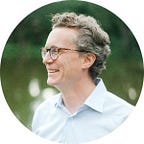Systems are designed around patterns of use, and in turn, patterns of use are shaped by the system we design. Observers of the American transportation network see this dynamic in every corner: New bicycle lanes stimulate traffic, just as new lane miles added to highways become congested as they incent car oriented development, and shift the route choices people make.
At the federal, state and local level, US policy and public investment has long focused on the physical space associated with the transportation network. More recently, goals have broadened to encourage “throughput” and “low cost, high benefit” projects that connect the most people to destinations for a certain level of investment. Today, given the imperative to make all of our systems carbon neutral, our mantra must become “zero emissions, low cost, high incentive to use renewables, high benefit.”
To make this shift, and make it with the rapidity needed to mitigate accelerating climate change, we need to evolve dramatically in the way we see systems we’ve designed. Humanity now relies on a fraction of the plant species that we cultivated 50 or 100 years ago, for example — a vulnerability due entirely to our own practice. In cities, the collection of data is exploding, in many cases with very specific geographic elements attached. These data provide unique opportunities for us to recast how we see and understand the way our systems function and to what extent they are effective.
We created this visualization to demonstrate the “carbon size” of various modes of urban transportation. In terms of emissions, a single SUV crowds out other modes serving the city; per passenger mile, an SUV emits nearly 2x a diesel bus and 14x a light rail vehicle — presuming the light rail vehicle is powered by coal-generated electricity. If hydro powered, the light rail passenger mile emits 1/660th of the SUV. See the full cost comparison here.
Our work at Visible City is entirely focused on collecting, analyzing and visualizing urban data to produce fresh insights for decision making. And given that cities are communities of individuals pursuing all flavors of goals, our pursuit follows — into energy, food and urban agriculture, public safety, transportation, development, entrepreneurship, parks and open space, education, housing, social service, water. It’s all part of the web of human life, which for more and more of us is urban life.
